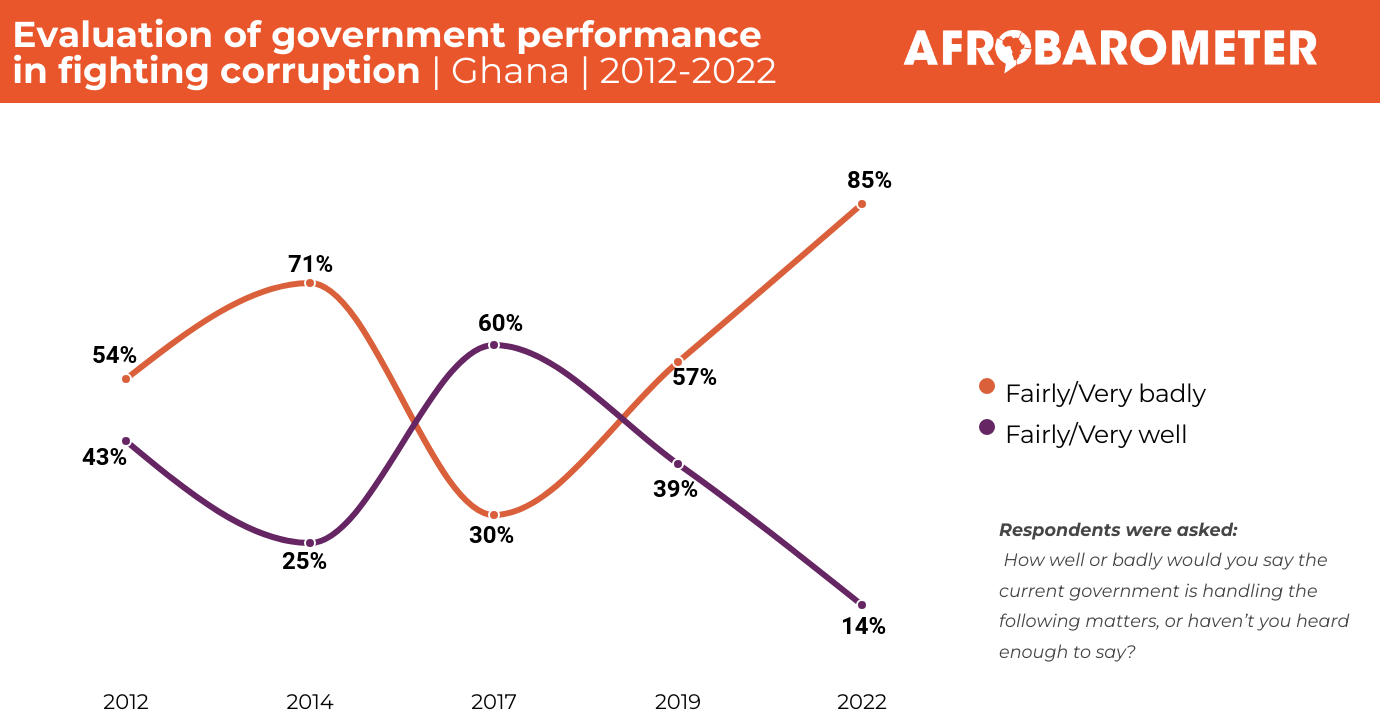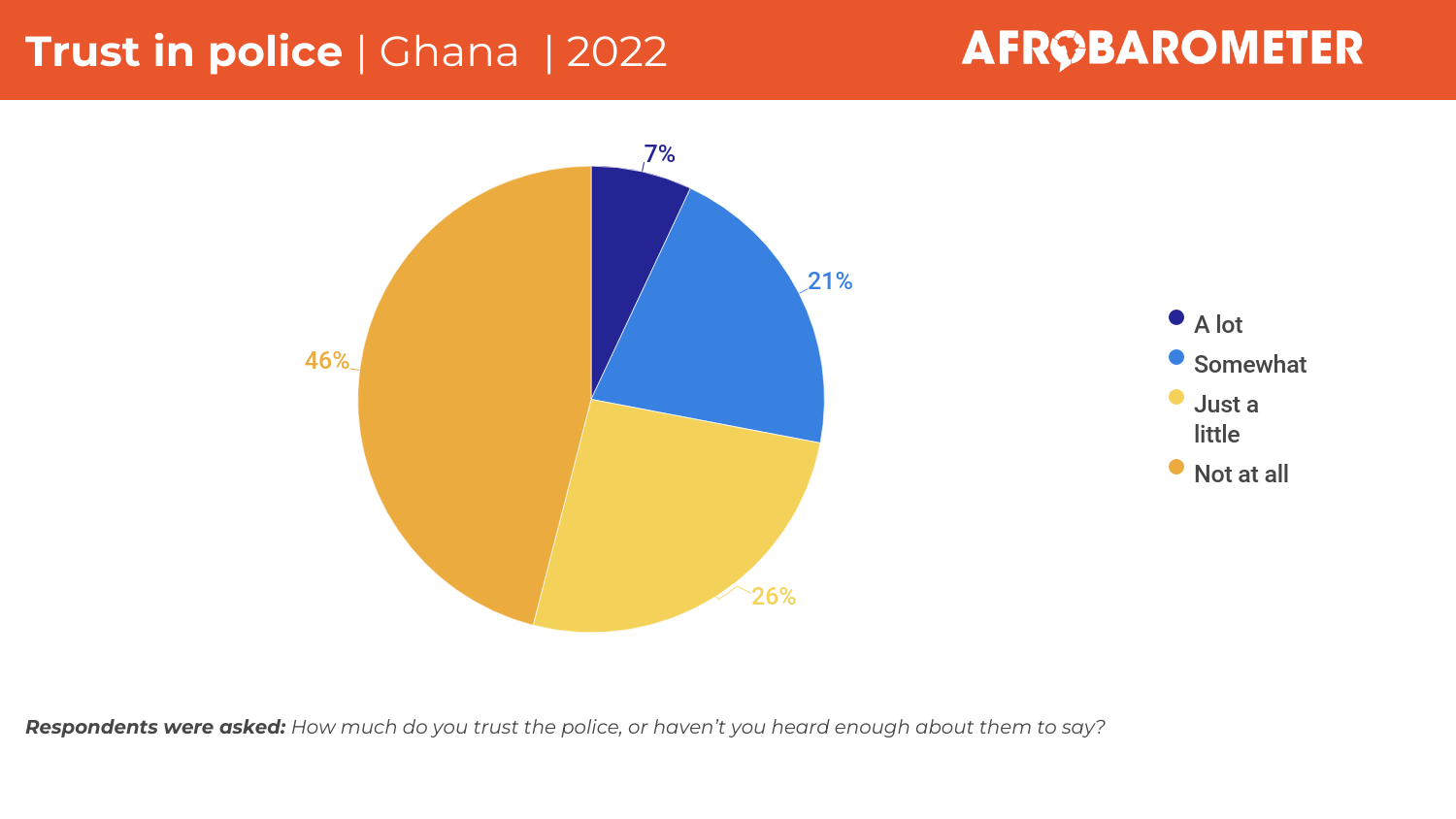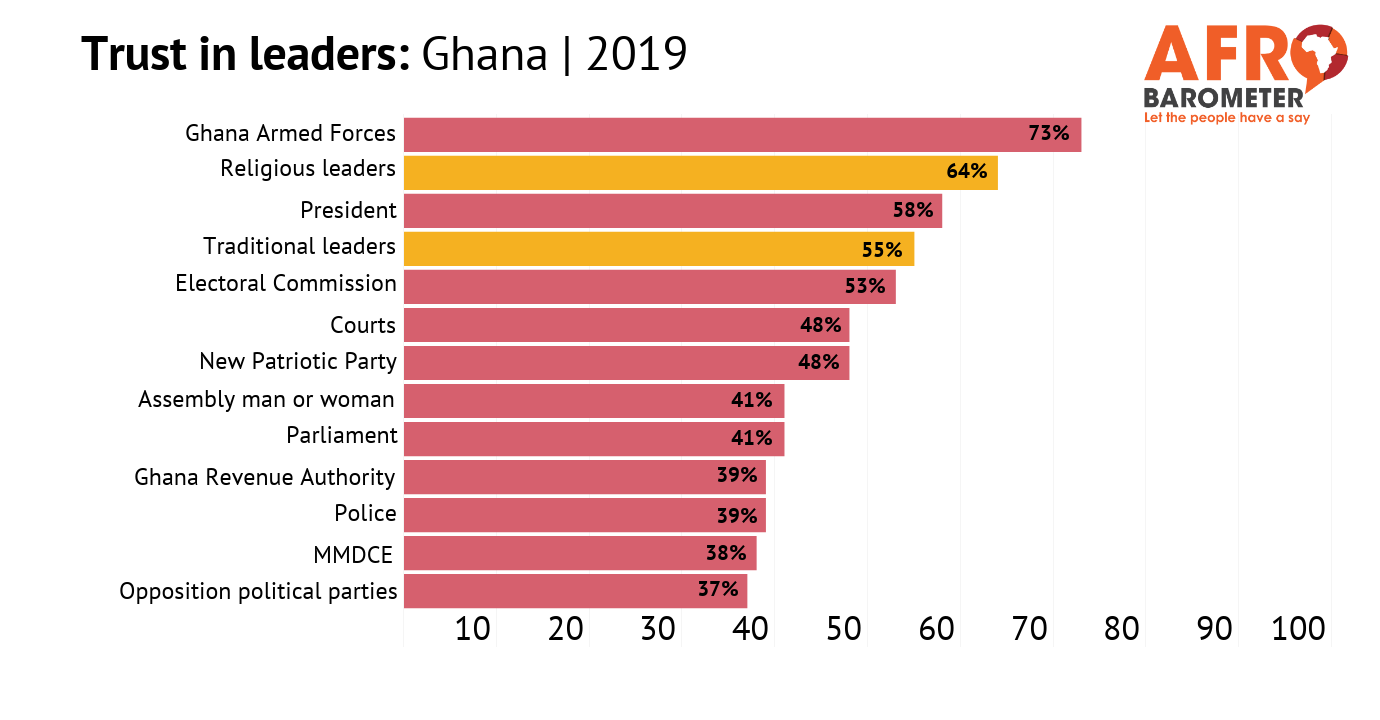- About a quarter (26%) of Ghanaians went without enough clean water at least once during the year preceding the survey, including about one in 12 (8%) who experienced water shortages “many times” or “always.”
- The proportion of citizens going without enough clean water has gradually decreased over the past 15 years, from 42% in 2002 to 26% in 2014.
- Seven out of 10 Ghanaians (70%) live in areas served by piped-water systems, while three out of 10 (30%) do not. Urban residents are almost twice as likely to have access to a piped-water system as their rural counterparts (89% vs. 47%)
- More than eight out of 10 residents of Greater Accra (86%), Brong Ahafo (84%), Ashanti (84%), and Western (81%) regions have access to piped water, compared to fewer than one in five residents (19%) in the Upper West region.
- The primary source of water for most Ghanaians is outside their immediate compound (71%). Only one in seven Ghanaians (15%) get their water for household use inside their home.
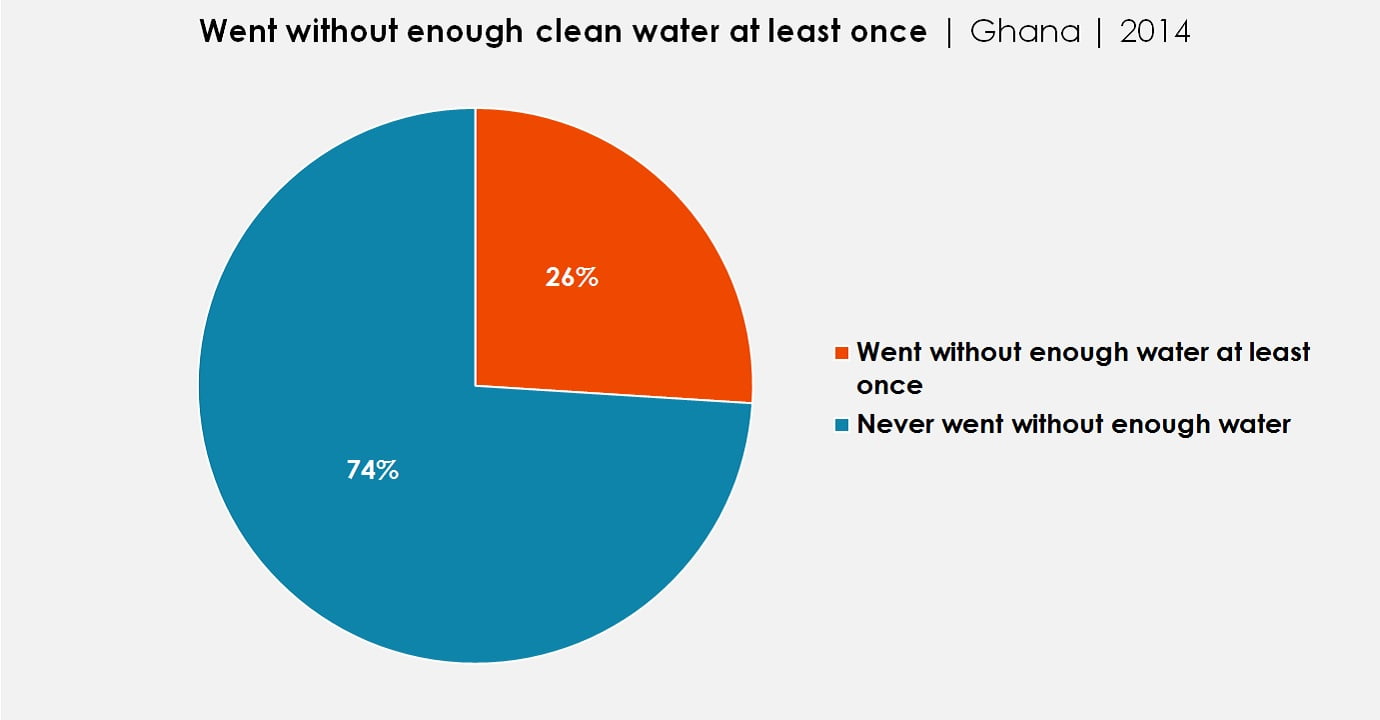
Water is a fundamental human need, yet 663 million people globally live without a safe water supply, according to the World Health Organization (2017). In Ghana, water shortages have forced citizens to queue for hours even after trekking to distant sources (Zoure, 2016). Despite efforts by successive governments to improve public access to potable water, the nation cannot yet claim to have met the United Nations Sustainable Development Goal (SDG) of ensuring that everyone has access to safe water.
The problem is compounded by the collective failure of the government and citizens to protect the nation’s water bodies. In May 2016, the Environmental Protection Agency (EPA) predicted that the country will fall into a severe water crisis by 2025 if nothing is done to reduce the increasing pollution of water bodies and forest degradation (Bokpe, 2016). The agency also projected that without decisive action, the country’s per-capita water availability will be 1,000 cubic metres per year, making Ghana a water-stressed country and presenting a potential source of inter-community conflict. A similar projection by the Water Research Institute of the Council for Scientific and Industrial Research showed that potablewater sources are diminishing at an alarming rate and that the country faces a water crisis by 2030 if current conditions persist (Bokpe, 2016). In his Independence Day address to the nation on March 6, 2017, President Nana Akufo-Addo underlined this issue, saying, “There is nothing we can do better to pay homage to those who fought to free us from bondage than to dedicate this 60th independence anniversary to protecting our environment and regenerating the lands and water bodies” (Ghana News Agency, 2017).
On the occasion of World Water Day 2017 (March 22), this dispatch examines Ghanaians’ access to water. Afrobarometer Round 6 (2014) survey data show that despite improvements in access to clean water, a significant proportion of the population still lacks adequate supplies of potable water. (For findings on water and sanitation across 36 African countries, see Afrobarometer Dispatch No. 76.
Related content
